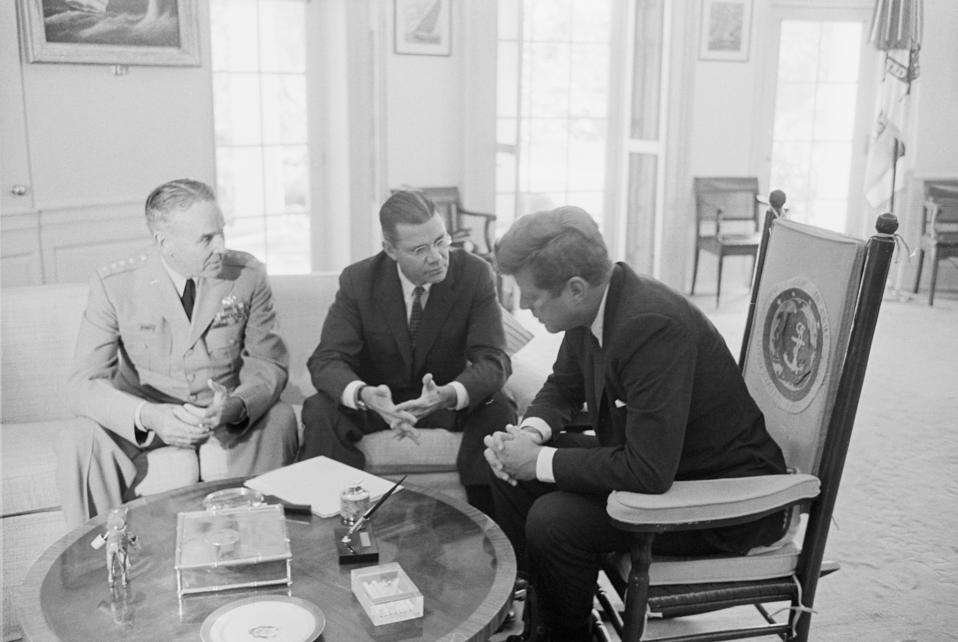Think how absurd we would view a board of directors asking a CEO leading an organization—where lives are on the line—to spend three years preparing a detailed budget of thousands of line items and, once approved, prohibiting movement of money across line items. That’s how we do defense budgeting today. Modern warfare will harness thousands of drones, artificial intelligence, data from constellations of thousands of commercial satellites and other innovations as more technology becomes digital…but today that innovation is constrained by a budget process conceived in the Kennedy Administration.
An Aging Budget Process Meets Emerging Technology: Not a Match Made in Heaven
This past month a Congressionally-mandated Commission released its findings and recommendations about the defense budgeting process. The Commission is named for the arcane defense budgeting process—PPBE—which is the acronym for Planning, Programming, Budgeting and Execution. Overdue for reform, this process was introduced in 1961 when Secretary of Defense Robert McNamara brought the best thinking from the Ford Motor Company (where he had been CEO) for more centralized control to Pentagon budgeting. This statistical control and systems-engineering thinking was well suited to the industrial age of building more aircraft carriers and fighter jets which are in design for a decade or more (several decades for the F-35) and fielded for 50 years. As we face more rapidly emerging threats than in the Cold War and need to leverage technologies with digital life cycles, there are two fundamental problems with PPBE.
Three Years for a Budget?
First, the overall time PPBE takes—three years—for the Defense Department to prepare the budget, for the Office of Management and Budget to review it and then for Congress to examine it and decide what to spend. In only one year in 20, does Congress pass an appropriation on time; again this year, the first half of the fiscal year elapsed without an appropriation. Worse, the preparation of the defense budget begins with a plan begun four years ago as part of a five-year Future Years Defense Plan which effectively keeps planning rooted in the past rather than looking to the future. No modern corporation or organization has a three-year budgeting process much less one that stems from assumptions made four years ago because as more time passes those assumptions underpinning the budget quickly become outdated. Clearly, in competing with China, we need a faster process—a single year to both plan and approve.
No Agility to Respond
The second budget problem is how unwieldy it is—more than 1,700 different line items—and the inability to move funds from one line item to another. The number of line items makes the budget more complicated and time-consuming to prepare as the justification for each line often comprises many pages and exhibits. The best way to compress the time in budgeting would be to reduce the 1,700 line items. Additionally, the spending is further divided into different types of spending called “colors of money” for spending on research and development, operations or procurement. Colors cannot be changed after spending is appropriated by Congress and money cannot be moved across line items, say to fund one aircraft type versus another, once an appropriations bill has passed.
Congress does have the duty of oversight with respect to the budget but 1,700 line items split into various colors of money managed by 535 members of Congress could easily be labeled unmanageable and micromanaged. There’s a reason that our allies do not use a similar system. Taken together, these problems are a major obstacle to modernizing the Department with the latest technology. An advisory council to the Secretary of Defense reported: the current PPBE process “limits the ability to quickly adapt systems against rapidly changing threats and increases the barriers for integrating advancements in digital technology in a timely and effective manner.”
PPBE Commission Recommendations
I applaud the Commission for its two years of work and 400-page report which contains many useful recommendations for Congress and the Department of Defense. One of my partners at Shield Capital, Raj Shah, served as a Commissioner. There are 28 report recommendations that, while not reducing the time to produce and approve a budget, do improve its agility. These include modifying the inflation-eaten thresholds for reprogramming to move money flexibly without Congressional approval and simplifying the ability to begin a new program. Most importantly, the recommendations of reviewing and consolidating budget line items (to reduce the 1,700) and restructuring the budget itself by mission instead of by color of money will improve overall agility. In particular, the recommendation to allow any color of money to be used for software and software enhancements better recognizes that software is continuously developing. These are a few of the most critical recommendations (Final Report recommendations 4-5 and 7-11) that should be fast-tracked to support defense modernization and speed innovative technology to our warfighters.
Why Is This Important Now?
The defense budget is the largest amount of discretionary spending within the federal government. While there is much debate about the amount of spending—$850 billion proposed for fiscal year 2025—there is no debate that these taxpayer dollars should be spent wisely and efficiently. This 63-year-old process is ripe for reform and the Commission on PPBE Reform Final Report points the way to significant improvements. There is no more important function of government than protecting the nation and these reforms can have a positive impact on how quickly we assess threats and leverage new technology to address those threats. Indeed, effective defense innovation depends on reforming defense budgeting.

